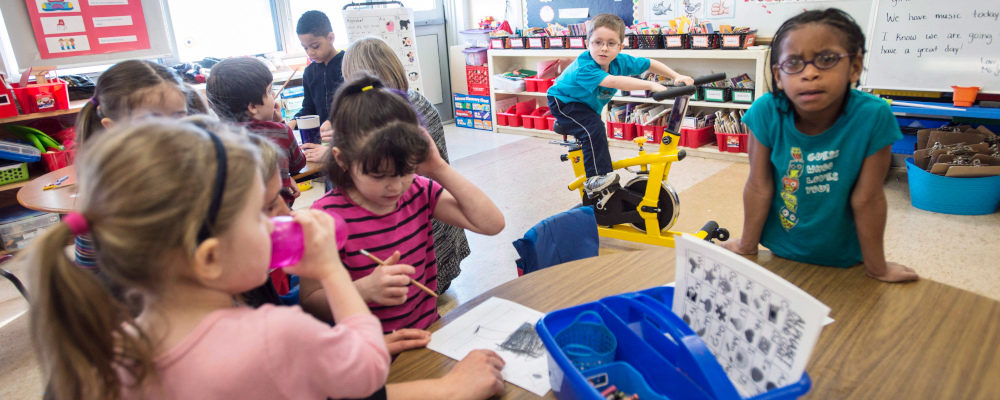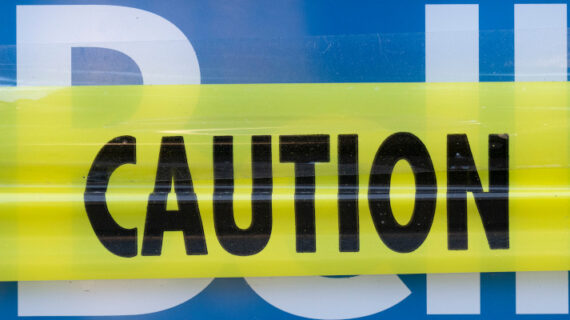Talking circles, justice rooms, and peer-based student discipline committees are popping up everywhere in Canada’s K-12 schools. Introduced as forms of positive, preventive discipline, or as exemplars of “restorative justice,” such innovations are shifting the role of the teacher from pedagogue responsible for teaching and learning to therapist operating more and more in the social and emotional domain. It has also been identified over the past two decades with what is known in the United Kingdom and the United States as the rise of the “therapeutic classroom.“
Widespread adoption of restorative justice theory and practices, commonly reflected in “circle conversations,” is largely aimed at moderating punitive, and at times harsh, discipline in schools. Defenders of the new student behaviour management approach claim that it works to the benefit of “labelled students,” drawn disproportionately from racialized and marginalized communities. Since the 2015 Truth and Reconciliation Commission report and the recent advent of the Black Lives Matter movement it has gained fresh currency in public schools everywhere.
Restorative justice flourished first in the criminal justice system as a preferred law reform innovation for juvenile offenders and aimed at, in the words of leading expert Dalhousie law professor Jennifer Llewellyn, “repairing or addressing the harm caused to social relationships when wrongdoing happens.” It attempts, not always successfully, to bring together offenders, victims, and affected community members to resolve conflict, normally after the judicial system or school disciple committee has rendered its decision.
The whole approach has a fresh coat of paint, but it is not really new. American criminologist and devout Mennonite Howard Zehr, dubbed the “grandfather of restorative justice,” pioneered the practice in the 1970s to address concerns over a criminal justice system that was harsh and punitive with offenders and tended to shut victims out of the entire process. His 2002 publication, Little Book of Restorative Justice, popularized the concept and attracted wider interest from scholars in Canada, New Zealand, and the United Kingdom. Back in 2015, while heading Eastern Mennonite University’s Center for Justice and Peacebuilding, Zehr explained what he hoped to achieve: “Accountability is understanding the harm you’ve caused and doing something to make it right.”
While popular in law reform circles as a way of promoting ”forgiveness,” it has struggled to gain acceptance, particularly among victims of crime and their families. It’s hard for victims, often suffering from life-altering trauma or witnessing blatant wrongdoing, to see—let alone appreciate—the harms being done by harsh sentences or punitive measures. From the beginning, restorative justice resolutions have suffered because of the public perception that offenders or juvenile violators tend to “get off easy” and rarely face meaningful consequences.
Restorative justice runs counter, in significant ways, to what U.K. student discipline expert Tom Bennett has termed “creating a culture” that supports improved student behaviour. Its mass application in elementary, middle school, and high school classrooms is more about “humanizing kids” through the latest mutation of what American education researcher Daniel Buck has termed “community-building prophylactics.” It also remains essentially experimental because, until recently, no independent, evidence-based research had been conducted demonstrating its effectiveness.
The first two authoritative studies, commissioned by the RAND Corporation in Pittsburg public schools (2015-2017)1Can Restorative Practices Improve School Climate and Curb Suspensions? https://www.rand.org/pubs/research_reports/RR2840.html and Maine middle schools (March 2019)2Evaluation of a Whole-School Change Intervention: Findings from a Two-Year Cluster-Randomized Trial of the Restorative Practices Intervention https://link.springer.com/article/10.1007/s10964-019-01013-2 were not promising because both failed to demonstrate the clear benefits of alternative, non-deterrent approaches to student discipline. Academic achievement fell for some students, particularly black children, who were exposed to restorative justice compared to students at schools who were disciplined as usual. Implementation problems were common because of the skills and time required to make it work in classrooms.
Promoters of restorative justice latched onto the practice because, for the most part, it aligned with their positive, preventative philosophy of student discipline. In doing so, they jumped over the research and put it into popular practice. It was a classic case of what American researchers Samuel Y. Song and Susan M. Swearer aptly described in November 2016 as “putting the cart before the horse.”3The Cart Before the Horse: The Challenge and Promise of Restorative Justice Consultation in Schools https://www.tandfonline.com/doi/full/10.1080/10474412.2016.1246972 Restorative justice’s popularity, they found, rested upon its promise as an effective alternative to student exclusions or suspensions in the absence of much in the way of supporting empirical research.
Experimenting with student behaviour and discipline innovations is acceptable as long as it does not cause harm or have unintended consequences. Yet engaging classroom teachers in carrying out social and mental health therapy is actually fraught with risks. It also contravenes the Canadian Psychological Association’s “Code of Ethical Standards” entrusting responsibility for engaging in psychological practices only to professionals with established “competence to carry them out to the benefit of others.”4Canadian Code of Ethics for Psychologists https://cpa.ca/aboutcpa/committees/ethics/codeofethics/
Restorative justice is far from a student discipline panacea. Giving students honest personal advice and career guidance is perfectly fine, but what is not appropriate, and may cause unintended harm, is turning today’s classrooms into group therapy sessions. It’s time to recognize the limitations of restorative justice insofar as they apply to its overuse in schools.




